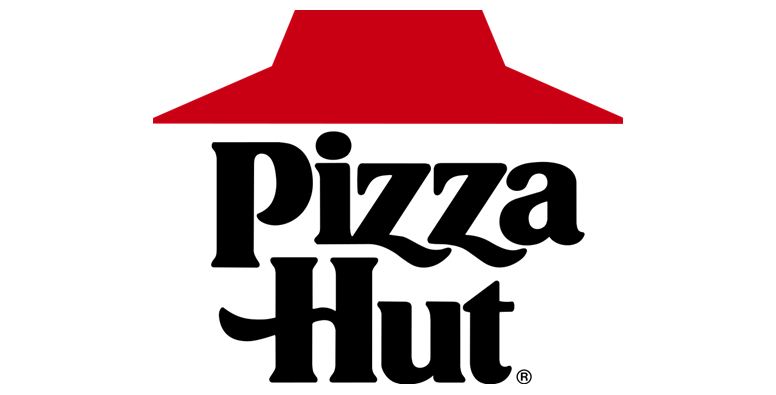Pizza Hut has made Italian-American cuisine more popular and accessible to billions of customers in the U.S. and several countries worldwide. It is currently the world’s largest pizza chain in terms of the number of branches and its percentage in the world pizza market.
Early history
The origins of Pizza Hut trace back to Wichita, Kansas, in 1958. Two brothers and enterprising university students Dan and Frank Carney borrowed $600 from their mother to open a small pizza store. They rented a small brick building at 503 South Bluff in downtown Wichita and purchased secondhand equipment to make their pizzas.
It became a success, and six months later, they opened a second branch. Within a year, they had six Pizza Hut stores.
Only about a year after opening their first store, the Carney brothers opened Pizza Hut’s doors to franchising. Their first franchisee was Dick Hassur, who opened his store in Topeka, Kansas.
During the 1960s Pizza Hut grew due to aggressive marketing efforts. By 1966, it had opened its 165th store. Two years later, they opened their first franchise outside the U.S., in Canada. Around the same time, Pizza Hut established the International Pizza Hut Franchise Holders Association (IPHFHA). The target was to acquire 40% of the company’s franchise operations, or 120 stores, and add them to the six outlets wholly owned by Pizza Hut.
However, these acquisitions proved to be disastrous to the pizza chain. Various accounting systems used by the previous franchise owners had to be merged into one operating system. It was a process that took eight months to complete. As a result, sales slumped, and profits declined.
Rising from the turmoil and facing new challenges
Frank Carney later admitted that the company’s excessive reliance on their annual report statistics as a basis to plan its business strategy didn’t work. He realized that Pizza Hut needed a more developed and longer-term business plan, so they decided to go public. From there, Pizza Hut bounced back from the turmoil and began to experience growth at an unprecedented rate.
In 1970, Pizza Hut opened more overseas branches, such as those in Munich, Germany and Sydney, Australia. It also opened its 500th store in Nashville, Tennessee that same year. By 1971, Pizza Hut had emerged as the world’s top pizza chain based on sales and the number of restaurants. For the first time, Pizza Hut broke into the one-million-dollar weekly sales mark in the U.S. market. In 1973, the chain opened more overseas locations in Japan and Great Britain.
Advertising played a major role in raising Pizza Hut’s public profile, therefore translating into increased sales. The company had spent so much money on local advertising that expenses significantly jumped from $942,000 in 1972 to $3.17 million in 1974. But Pizza Hut knew that its efforts would be paid off.
Soft drink giant PepsiCo acquired Pizza Hut in November 1977. At the time of the acquisition, Pizza Hut’s sales rose to $436 million.
The 1980s brought new challenges to Pizza Hut, as new competitors vied for the top spot in the pizza restaurant industry. While Pizza Hut’s main competitors had been regional chains, such as Denver-based Shakey’s and Dallas-based Pizza Inn, the new decade brought in fierce competition from newer players, such as Domino’s Pizza, Little Caesar’s, and Pizza Express.
During this decade, Pizza Hut introduced several new menu items to rise above the competition. Its “Pan Pizza” (pizza with a thicker crust and baked in a deep pan), “Personal Pan Pizza” (single-serve pizzas baked and served within five minutes) and “Hand-Tossed Traditional Pizza” became hits among customers. In 1986, Pizza Hut opened its 5,000th location in Dallas, Texas.
1990s
In 1990, the company opened its first branch in Moscow, Russia. The Russians’ own Pizza Hut offering, “Moskva,” had a distinctively local flavor. With toppings like tuna, mackerel, salmon, sardines and onions, the Moskva pizzas catered to the Russians’ love for salty foods.
There have been various pizza toppings in other countries that cannot be found in the U.S., such as sauerkraut and onion, spinach, corned beef, and even curry.
In the 1990s, Pizza Hut was adding drive-through units. It also opened Pizza Hut Express within other establishments (such as malls), offering quicker and cheaper menu items.
During this decade, PepsiCo merged all of its restaurants, including Pizza Hut, KFC (formerly Kentucky Fried Chicken), and Taco Bell. In early 1997 PepsiCo announced plans to spin off its restaurant division, leaving all three restaurants to become a part of a new independent company called Tricon Global Restaurants, which is now known as Yum! Brands.
Present
Pizza Hut’s profits dropped during the early 2010s. To boost sales, Pizza Hut announced its plans for rebranding in 2014. They expanded their menu by including various items such as eleven new specialty pizzas and crust flavors. They also changed the look of their employees’ work uniforms. In 2017, UK-based company Richtopia ranked Pizza Hut at number 24 on its list of “200 Most Influential Brands in the World.” In 2019, Pizza Hut brought back its old logo, which had been first used from 1967 to 1999.
Pizza Hut has 18,703 restaurants in the US and worldwide as of December 2019.


